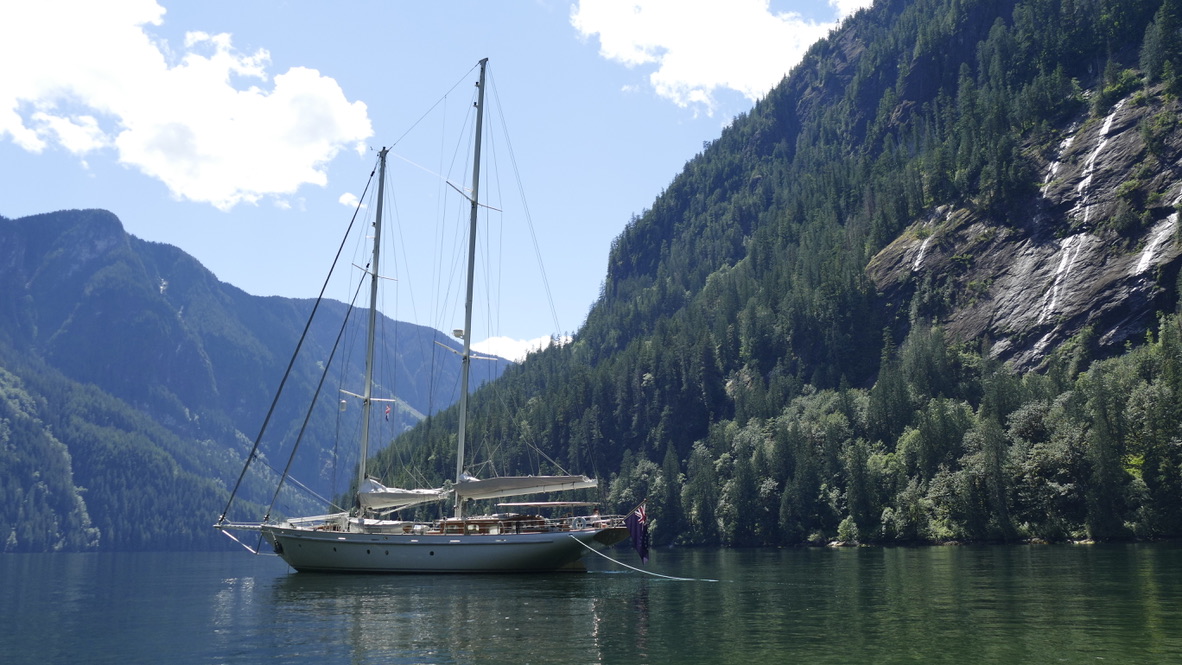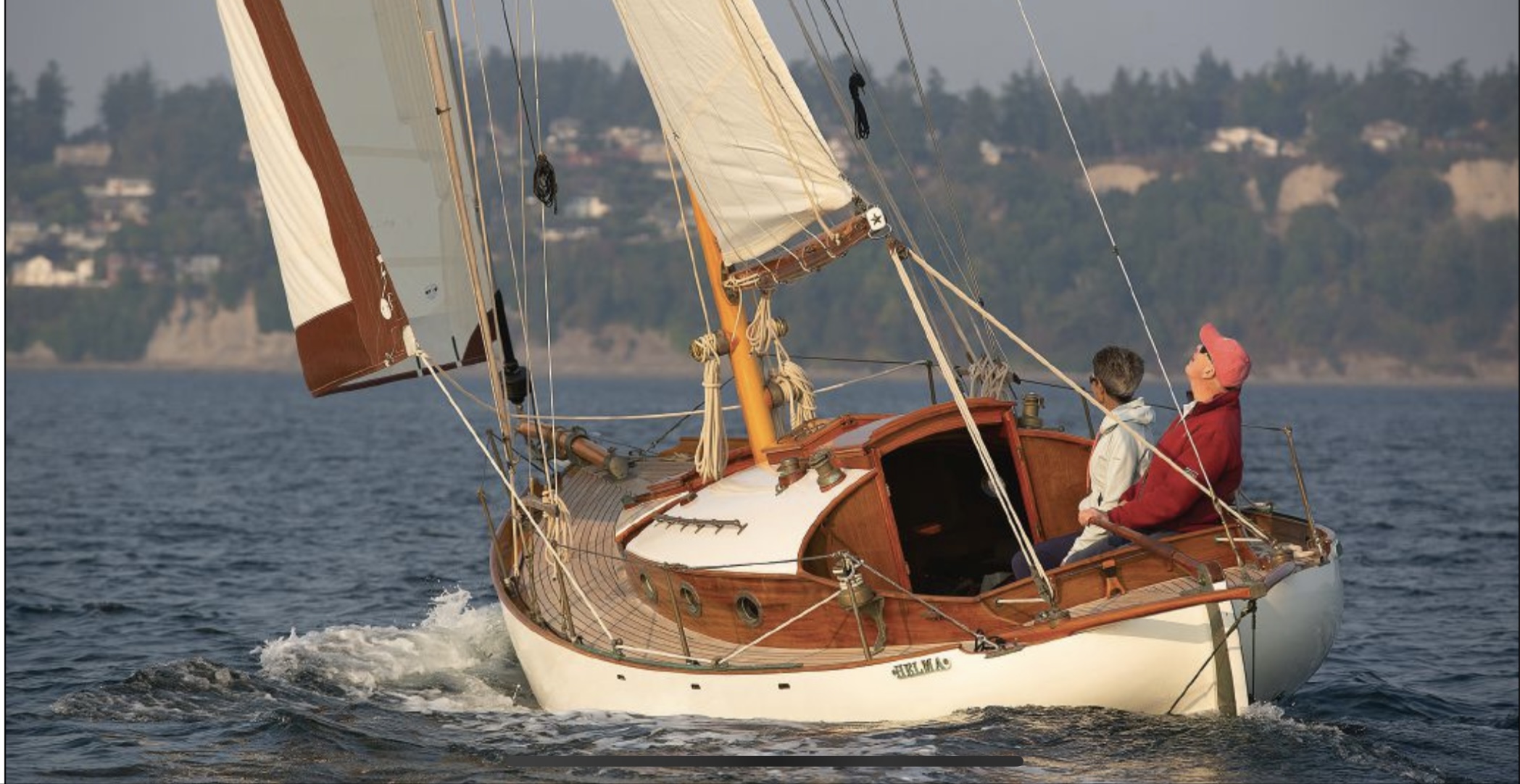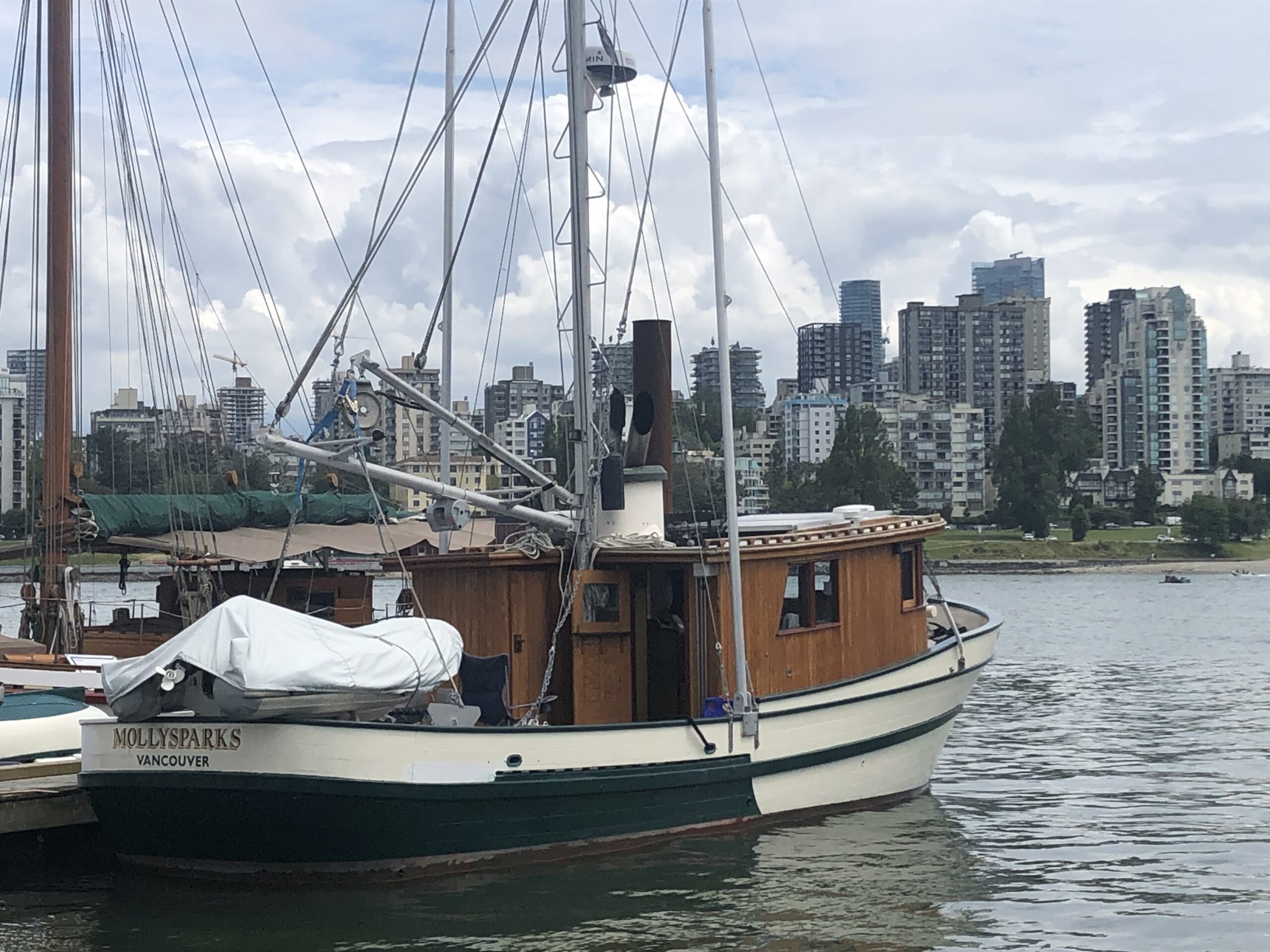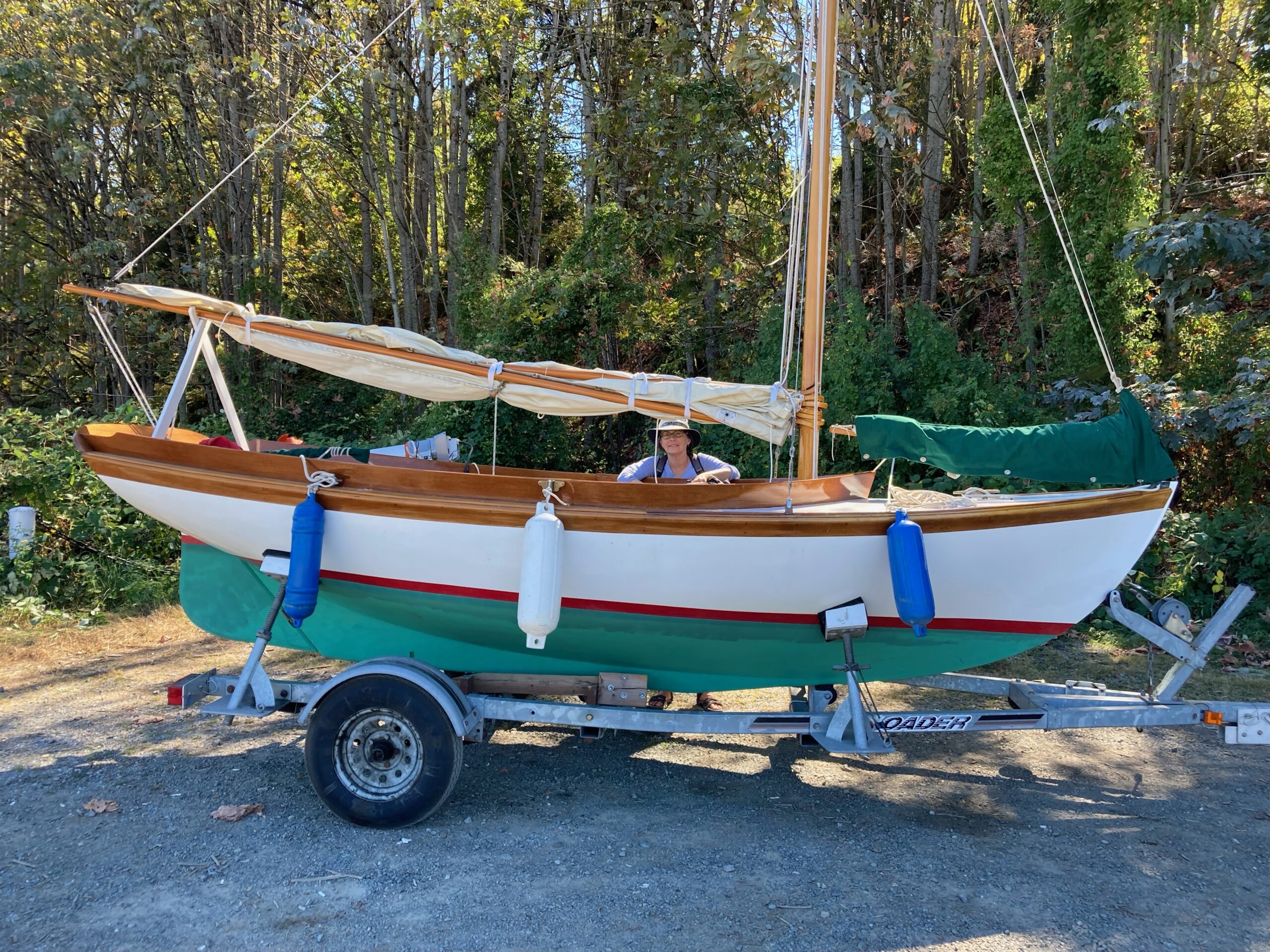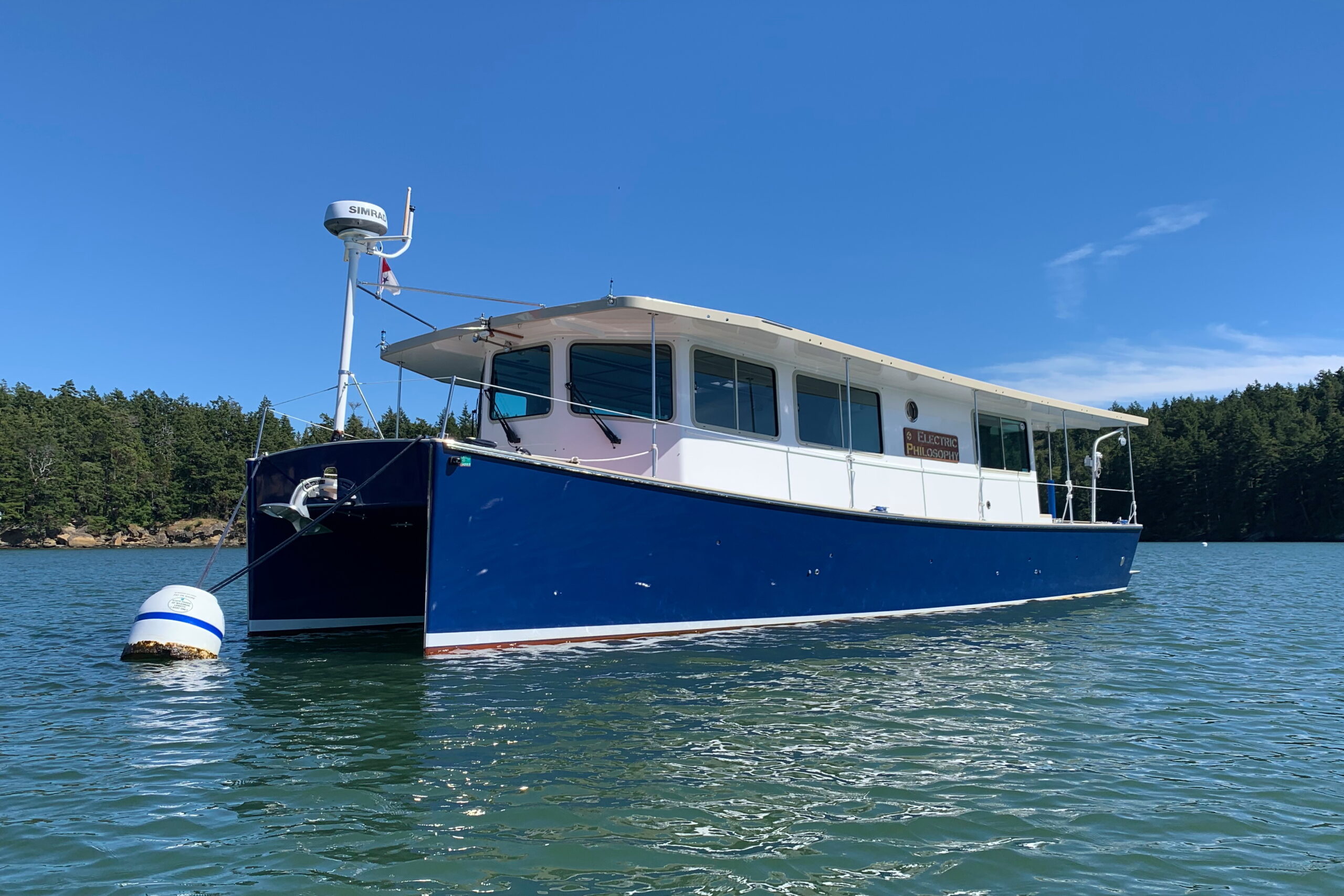
Electric Philosophy is a solar electric catamaran designed for comfortable, extended self-sufficient cruising by a couple and one or 2 guests. At the 2025 show it will be returning from its third trip to Alaska. In the 4 years since its launch in 2021, it has traveled nearly 12000nm through the Salish Sea and Inside Passage to Glacier Bay and Sitka. The entire boat, including the electric propulsion, is powered solely by the solar panels on its large roof. A typical cruising season is to leave its home port of Olympia in April and not return until October.
Electric Philosophy is a custom design and build by Devlin Designing Boatbuilders, in collaboration with the owner, Ed Pauley, who designed and built the solar electric system and selected the electric propulsion motor system. The construction is traditional Devlin stitch and glue wood/epoxy. The catamaran boat form was driven by the requirements for the very large solar array and large battery banks.
Typical travel speed in calm conditions is 5.5-6.5 kts; max is 8.5 kts at full power. It is designed for continuous use without shore charging with all power needs supplied by solar charging to the large battery banks. Shore power connections were designed into the build but have not been needed nor used. The battery banks are sized with a large enough reserve that we can run for 2-3 days with no solar input due to weather or darkness.
The twin hulls are dedicated to the four independent Lithium Iron Phosphate battery banks (two 24V for house needs, two 48V to power the twin electric motors). The hulls also provide ample room for large fresh water and holding tanks, with minimal hull penetrations and no thru hulls below the waterline. Propulsion is provided by an air cooled, 20kW electric motor in each hull. All living accommodations are on deck level, with a queen master berth, a large dinette that converts to a queen guest bed, electric galley, and separate head and shower. The solar roof provides cover to side deck walkways and cockpit area. The unique position for the radar dome at the bow is to prevent shading on the solar panels.


